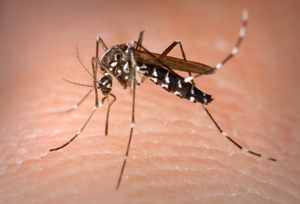The invasion of the Asian tiger mosquito (Aedes albopictus) is a hot topic in France. Whilst, as yet, the species is not found in the UK, some are predicting that, with climate change, it might one day reach these shores.
|
French pest professionals came to Paris to hear Dr Didier Fontenille, a medical entomologist associated with the Research Institute for Development in Montpellier and the French National Centre of Vector Expertise. Dr Fontenille also participates in the MIVEGEC, a French research group which is studying the ecology, genetics, evolution and control of infectious diseases and vectors, so his credentials are impeccable. Dr Fontenille outlined how the Asian tiger mosquito (Aedes albopictus), which originated in tropical and sub-tropical areas of South East Asia has hitched a lift on planes and boats and over the past 20 to 30 years has spread to the Americas and Europe. Colonies are now established in 20 European countries and not just in the South, but as far north as Germany, Belgium and the Netherlands. In the South of France numbers are increasing rapidly. Whilst the females are a nuisance blood sucking pest, the real threat comes from the fact thatAedes albopictus is an important vector for the transmission of many viral pathogens, including dengue and Chikungunya fevers. At present the risk of disease is low but the more mosquitoes there are, the higher the risk becomes. Discarded tyres a particular favourite So what can be done about this pest? The Asian tiger mosquito was just one of 11 topics covered in the Parasitec seminar programme on Wednesday 14 and Thursday 15 November. Topics ranged from Biocides Regulations to anticoagulant resistance and from waste disposal to pest control in the food industry. |
|
|




